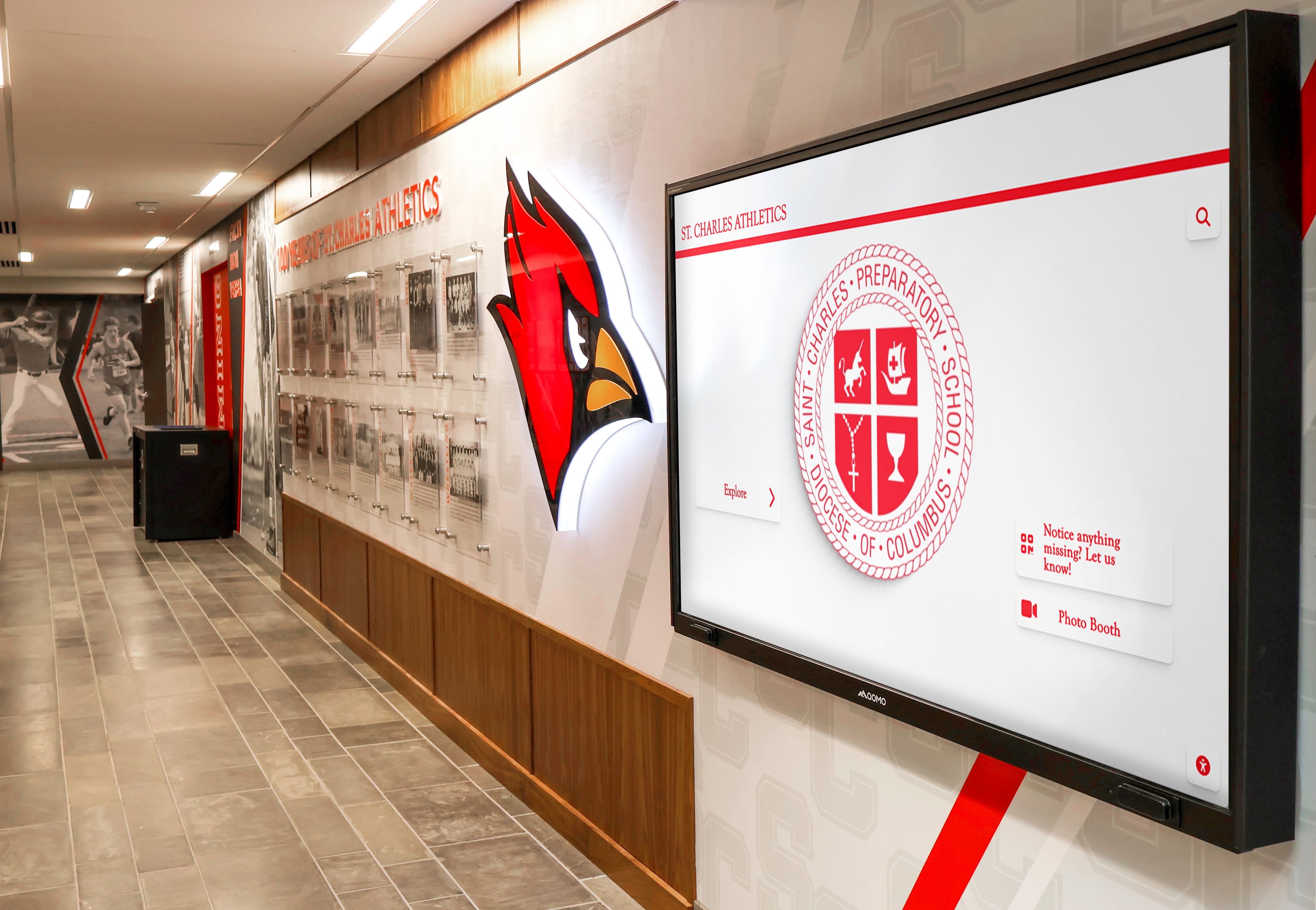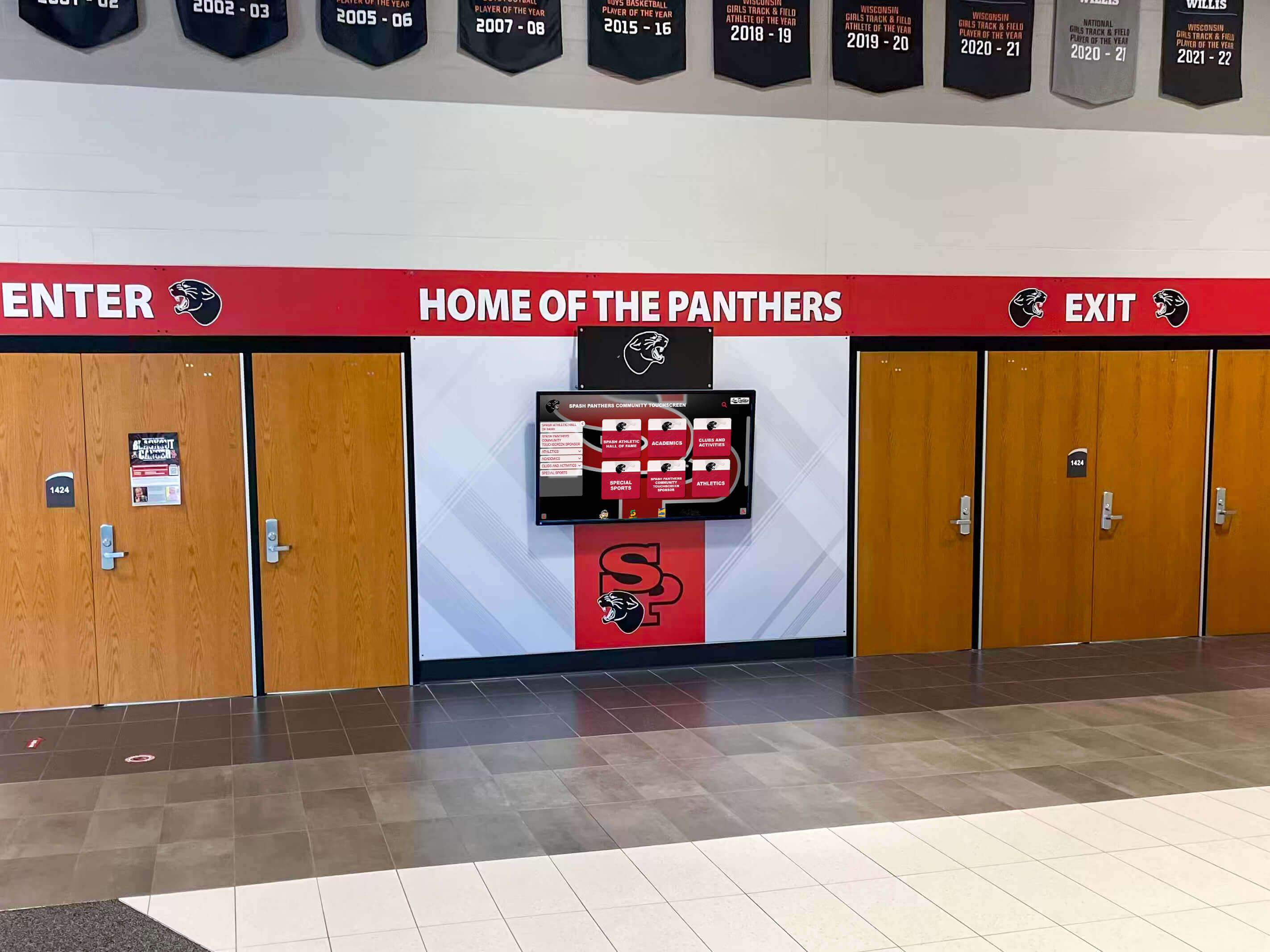School pride forms the emotional heartbeat of educational communities, creating an invisible yet powerful force that shapes student experiences, drives achievement, and builds lasting connections between individuals and institutions. Far more than superficial enthusiasm at sporting events, authentic school pride represents the deep sense of belonging, shared identity, and collective commitment that transforms schools from buildings students attend into communities where they genuinely thrive.
In an era when student engagement and mental health challenges increasingly concern educators, building meaningful school pride has never been more critical. Schools with strong pride cultures consistently demonstrate higher student attendance, improved academic performance, enhanced social-emotional wellbeing, greater community support, and stronger alumni connections that extend far beyond graduation day.
This comprehensive guide explores every dimension of school pride in 2025: what it truly means, why it matters so profoundly, how to build it authentically, and how modern recognition solutions can amplify traditional approaches to create school communities where every student feels valued and connected.
What Is School Pride? Understanding the Foundation
School pride encompasses the emotional connection, positive feelings, and sense of identification that students, staff, families, and alumni feel toward their educational institution. It manifests in multiple dimensions that together create comprehensive school attachment.
The Core Components of School Pride
Institutional Identity and Belonging
At its foundation, school pride reflects how individuals see themselves as part of their school community. Students with strong school pride don’t just attend their school—they identify with it as part of who they are. This sense of belonging creates psychological safety and social connection that research consistently links to academic success and wellbeing.
Collective Achievement and Shared Success
School pride amplifies during moments of collective accomplishment—championship victories, outstanding academic achievements, successful performances, or recognized community service. These shared successes become stories communities tell about themselves, creating narratives of excellence that inspire current and future students.
Respect for History and Tradition
Pride deepens when students understand they’re part of something larger than themselves—a legacy spanning decades or even centuries. Knowledge of school history, recognition of past achievers, and participation in long-standing traditions create continuity that connects generations and provides context for current experiences.

Values Alignment and Purpose
Schools articulating clear values and demonstrating those values consistently through actions create foundations for pride. When students see their schools standing for principles they respect—excellence, integrity, service, innovation, inclusivity—they develop pride in association with institutions representing meaningful ideals.
Visible Recognition and Celebration
How schools acknowledge achievement significantly impacts pride development. Comprehensive recognition programs celebrating diverse accomplishments communicate that the institution notices, values, and honors student contributions across academic, athletic, artistic, service, and character domains.
School Pride vs. School Spirit: Understanding the Distinction
While often used interchangeably, school pride and school spirit represent related but distinct concepts. School spirit typically refers to the enthusiastic, visible displays of support—cheering at games, participating in spirit weeks, wearing school colors. These external manifestations matter, but they represent expressions of something deeper.
School pride constitutes the underlying emotional attachment and identification that motivates spirit displays. Pride is the “why” behind the spirit. Students may show school spirit by attending a pep rally, but they do so because they feel genuine pride in being part of their school community.
The distinction matters because schools can manufacture temporary spirit through entertaining activities, but building authentic pride requires addressing fundamental needs for belonging, recognition, and meaningful connection. Sustainable school culture requires both—deep pride providing foundation and enthusiastic spirit providing visible expression.
Why School Pride Matters: The Research-Backed Benefits
Extensive educational research demonstrates that school pride produces tangible benefits across multiple dimensions of school effectiveness and student development.
Academic Performance and Achievement
Students with strong school pride consistently demonstrate better academic outcomes. Pride creates intrinsic motivation to represent the school well through academic excellence. When students care about their institution, they care more about performing at high levels that reflect positively on the school community.
According to educational research, schools with high student identification and pride see measurably higher standardized test scores, improved grade point averages, greater participation in advanced coursework, and increased college enrollment rates compared to demographically similar schools with lower pride levels.
The mechanism driving this relationship involves psychological investment—students who identify strongly with their schools internalize academic achievement as personally meaningful rather than viewing it as externally imposed requirement. This intrinsic motivation proves far more powerful than external rewards or consequences for sustaining long-term achievement.
Attendance and Engagement
School pride directly correlates with improved attendance rates and broader school engagement. Students who feel pride in their schools want to be there, viewing school as a meaningful community rather than an obligation. This translates into measurably lower absence rates, reduced tardiness, higher participation in extracurricular activities, and increased involvement in school governance and leadership.
The attendance impact proves particularly significant given well-established links between attendance and academic achievement. Schools that successfully build pride effectively address chronic absenteeism through creating environments students genuinely want to participate in rather than avoid.

Behavior and School Climate
Strong school pride associates with improved behavioral outcomes and more positive school climate. Pride-driven schools experience fewer discipline incidents, reduced bullying and conflict, more prosocial behavior and peer support, enhanced respect for school property and rules, and stronger sense of collective responsibility for school culture.
This behavioral impact stems from pride creating psychological ownership of school culture. Students who feel pride in their schools recognize that their individual behavior affects the collective reputation they care about maintaining. This social accountability proves far more effective than punitive discipline systems for promoting positive behavior.
Mental Health and Wellbeing
Perhaps most importantly given contemporary student mental health challenges, school pride positively impacts emotional wellbeing and resilience. Students with strong school connection report significantly lower rates of anxiety and depression, reduced feelings of isolation and loneliness, higher self-esteem and confidence, greater sense of purpose and meaning, and improved stress management and coping.
The wellbeing impact reflects fundamental human needs for belonging and mattering. School pride signals to students that they belong to a community that values them, providing psychological protection against the isolation and disconnection that contribute to mental health struggles.
Alumni Engagement and Institutional Support
School pride impacts extend far beyond graduation, influencing alumni relationships and support throughout life. Strong school pride during student years predicts greater likelihood of alumni giving, higher participation in alumni events and programs, more active networking and career support for current students, enhanced advocacy for institutional needs and priorities, and sustained emotional connection decades after graduation.
This long-term loyalty creates practical benefits for schools through financial support, volunteer engagement, professional expertise, and community advocacy. Alumni who felt genuine pride during their student years become lifelong institutional ambassadors.
The Psychology Behind School Pride: What Creates Connection
Understanding the psychological mechanisms underlying school pride helps educators design more effective approaches to building it.
Sense of Belonging and Social Connection
Human beings possess fundamental psychological needs for belonging to groups where they feel accepted and valued. School pride emerges naturally when educational environments satisfy this core need through inclusive climates where diverse students find welcoming spaces, relationships with peers and adults who genuinely care, multiple communities within the larger school where students find specific belonging, and affirmation that their presence matters to the school community.
Students develop pride when they can authentically answer “yes” to the question: “Do I truly belong here?” This belonging forms the foundation upon which all other pride-building efforts rest. Without genuine inclusion and acceptance, superficial pride activities ring hollow.
Recognition and Validation
Psychological research consistently demonstrates that recognition satisfies core human needs for acknowledgment and validation. School pride strengthens when institutions recognize student achievements and contributions through comprehensive programs honoring diverse accomplishments, public celebration communicating that excellence matters, individual acknowledgment making students feel personally seen, permanent documentation ensuring contributions aren’t forgotten, and peer recognition creating social validation alongside institutional acknowledgment.
Modern digital recognition displays enable schools to celebrate more students across more categories than traditional trophy cases ever allowed, democratizing recognition in ways that build broader pride.

Identity Formation and Self-Concept
Adolescence represents a critical period for identity development when young people actively construct their sense of self. Schools become significant contexts for this identity work, and school pride reflects integration of school membership into personal identity. Students develop pride when their school provides positive identities they want to claim, exemplary peers and alumni they aspire to emulate, values and ideals they respect and embrace, achievement opportunities that allow them to distinguish themselves, and recognition that affirms their developing competence and character.
When students can proudly say “I am a [school name] student” as a positive self-statement, school pride has taken root at the deepest psychological level.
Collective Efficacy and Shared Achievement
Pride amplifies through collective experiences of accomplishment and success. Social psychology research on collective efficacy shows that groups believing they can achieve important goals through joint effort develop stronger group identification and commitment.
Schools build this collective efficacy through setting meaningful communal goals the school pursues together, celebrating progress toward those objectives publicly, ensuring all students can contribute to collective success somehow, acknowledging group achievements alongside individual recognition, and creating narratives of collective accomplishment that become part of school identity.
Championship seasons, exceptional academic achievements, successful service projects, or outstanding performances create shared pride as students recognize they’re part of something collectively excellent.
Building Authentic School Pride: Foundational Strategies
Creating genuine school pride requires comprehensive approaches addressing multiple dimensions of school culture and student experience.
Comprehensive Recognition Programs
Recognition programs represent the most powerful tools for building school pride by validating achievement, communicating values, and creating aspirational examples.
Academic Recognition Excellence
Schools should implement robust academic recognition including traditional honor roll and academic awards, subject-specific recognition honoring excellence in particular disciplines, improvement awards acknowledging significant growth, scholarship recipient celebrations, academic competition and olympiad recognition, research and innovation showcases, and academic halls of fame documenting intellectual excellence across school history.
Academic recognition demonstrates that educational achievement—schools’ core mission—receives highest institutional priority. When students see peers celebrated for intellectual accomplishment, academic excellence becomes part of what it means to belong to their school community.
Athletic and Competitive Achievement
Athletic recognition builds pride through highly visible team and individual success. Effective athletic recognition includes championship team celebrations and documentation, individual record-breaker acknowledgment, all-conference and all-state athlete honors, college commitment celebrations, sportsmanship and character awards, multi-sport athlete recognition, and comprehensive digital record boards documenting athletic excellence permanently.
Athletic success creates powerful collective pride as entire communities unite around team achievements, with recognition ensuring these accomplishments become lasting parts of school history rather than temporary excitement.
Arts and Performing Arts Celebration
Students excelling in creative domains deserve equal recognition alongside academic and athletic achievers. Comprehensive arts recognition includes student art exhibitions and galleries, performance video documentation and sharing, competition and festival recognition, all-state ensemble member honors, alumni artist profiles, and permanent displays celebrating artistic excellence across disciplines.
Arts recognition communicates that creativity, expression, and aesthetic achievement matter as much as other accomplishment domains, building pride among students whose talents lie in creative rather than academic or athletic areas.

Service, Leadership, and Character
Recognition extending beyond talent-based achievement to acknowledge contribution and character ensures broader student inclusion. Service and character recognition includes community service hour acknowledgment, impactful project documentation, character award programs, leadership position recognition, peer tutoring and mentoring acknowledgment, and values exemplification honors.
This recognition communicates that who students become matters as much as what they accomplish, building pride around schools’ character development mission alongside academic preparation.
Meaningful Traditions That Connect Generations
Strong traditions create continuity, shared identity, and memorable experiences that define school culture across time. Building pride through traditions requires establishing meaningful annual events that students anticipate, ceremonial traditions marking important passages and achievements, ritual elements that become recognizable school signatures, historical connections linking current students to institutional legacy, and flexibility allowing traditions to evolve while maintaining core elements.
Well-designed traditions become defining features of school identity—“This is what we do here”—creating shared experiences that bond students to institutions and to each other across graduating classes.
Creating Inclusive School Culture
Pride flourishes in inclusive environments where all students feel valued regardless of background, ability, interests, or circumstances. Building inclusive pride requires diverse recognition opportunities validating multiple forms of excellence, representation ensuring all student segments see themselves reflected in leadership and visibility, elimination of exclusive practices that privilege particular groups, proactive outreach to historically marginalized students, and authentic voice ensuring all students can influence school culture and decisions.
When pride depends on narrow achievement categories or exclusive groups, many students develop resentment rather than connection. Inclusive pride ensures every student can find pathways to belonging and recognition.
Student Voice and Leadership Opportunities
Pride strengthens when students exercise authentic influence over their school environment rather than feeling like passive recipients of adult-imposed culture. Meaningful student voice includes effective student government with real decision-making authority, classroom-level choice and input on learning experiences, student involvement in policy and practice development, distributed leadership opportunities across activities and contexts, and explicit solicitation of student perspectives on school improvement.
Students who shape their school’s culture feel ownership that deepens pride. When students can say “we created this” rather than “this was done to us,” pride becomes intrinsic rather than externally imposed.
Modern Approaches: Technology and Digital Solutions for School Pride
Contemporary technology offers innovative approaches to recognition, communication, and community building that amplify traditional pride-building strategies.
Interactive Digital Recognition Displays
Traditional trophy cases and wall plaques face inherent limitations in space, accessibility, and engagement. Modern touchscreen recognition systems transform how schools honor achievement through unlimited capacity recognizing comprehensive accomplishments without space constraints, multimedia integration incorporating photos, videos, and rich storytelling, intuitive navigation enabling quick location of specific individuals or achievements, real-time updates adding new recognition immediately as accomplishments occur, and interactive exploration creating engaging experiences that hold attention far longer than static displays.
Solutions like interactive touchscreen halls of fame enable comprehensive documentation of school excellence while creating experiences that resonate with technology-native students. Schools implementing these systems report dramatically increased visitor engagement and stronger connection to school history.

Social Media for Pride Amplification
Strategic social media use extends recognition and celebration beyond campus boundaries while connecting school communities in contemporary communication spaces. Effective social media pride strategies include achievement spotlight posts celebrating individual and team success, behind-the-scenes content showing preparation and effort, tradition documentation preserving special events for future reference, alumni connection features maintaining graduated student engagement, student voice platforms allowing peer-to-peer sharing, and interactive campaigns encouraging community participation and engagement.
Social media transforms school communication from one-way broadcasting to community conversation, creating digital spaces where pride can flourish alongside physical campus culture.
Virtual Recognition and Digital Communities
Beyond physical campus and social media, dedicated digital platforms create additional connection opportunities particularly valuable for alumni and geographically dispersed community members. Virtual community tools include online halls of fame accessible from anywhere, digital alumni networks enabling ongoing connection, virtual event participation for remote audience engagement, mobile apps providing convenient community access, and searchable achievement databases enabling exploration of school history.
These digital extensions ensure that school pride and community remain accessible regardless of physical proximity to campus, maintaining lifelong connections that strengthen overall institutional culture.
Data and Assessment Tools
Modern technology enables more sophisticated understanding of school pride and culture through regular digital surveys measuring student connection and belonging, engagement analytics tracking participation patterns, sentiment analysis understanding community feelings and perceptions, demographic distribution analysis ensuring inclusive pride development, and longitudinal tracking monitoring culture trends over time.
This data helps schools understand whether pride-building efforts work and where adjustments may be needed, enabling continuous improvement based on evidence rather than assumptions.
Practical Implementation: Building School Pride Step by Step
Schools ready to enhance pride should follow systematic approaches ensuring effective launch and sustainable operations.
Phase 1: Assessment and Planning
Begin by understanding current state through student, staff, and family surveys about school culture and pride, focus groups exploring experiences and perceptions in depth, data analysis of attendance, behavior, and engagement patterns, stakeholder input on priorities and preferences, and identification of specific strengths to build upon and gaps to address.
This assessment creates baseline understanding enabling targeted improvement efforts rather than generic programs that may not address actual needs.
Phase 2: Strategic Goal Setting
Based on assessment findings, establish specific, measurable pride objectives such as increasing student belonging survey scores by defined amounts, improving attendance rates to specified targets, enhancing participation rates in activities and events, expanding recognition program reach to include more students, and strengthening alumni engagement through measurable indicators.
Clear goals enable subsequent evaluation of whether pride-building efforts produce intended outcomes.

Phase 3: Comprehensive Strategy Development
Design multifaceted approaches addressing recognition program enhancement and expansion, tradition establishment or revitalization, inclusion and belonging initiatives, student voice and leadership structures, communication improvement across channels, technology implementation where appropriate, and staff development ensuring consistent implementation.
Comprehensive strategies work far better than isolated tactics because school pride emerges from overall culture rather than single programs.
Phase 4: Implementation and Communication
Launch pride initiatives through clear communication explaining rationale and opportunities, ceremonial events generating awareness and excitement, phased rollout allowing refinement based on early feedback, stakeholder training ensuring everyone understands new approaches, and visible leadership commitment demonstrating organizational priority.
Strong launches create momentum while communicating that pride-building represents genuine institutional commitment rather than temporary enthusiasm.
Phase 5: Monitoring and Continuous Improvement
Sustain and improve pride efforts through regular progress monitoring against established goals, stakeholder feedback collection understanding experiences and suggestions, data analysis identifying what works and what needs adjustment, public progress celebration maintaining awareness and engagement, and systematic refinement based on evidence about effectiveness.
School pride develops over years rather than months, requiring sustained commitment and ongoing optimization based on what specific school communities respond to most strongly.
Overcoming Common Challenges in Building School Pride
Even well-designed pride initiatives face predictable challenges requiring thoughtful responses.
Challenge: Narrow Pride Based on Exclusive Achievement
When recognition and celebration focus narrowly on high-achieving students in limited domains, many students feel excluded rather than included. The solution requires broadening recognition categories to honor diverse contributions, creating multiple pathways to acknowledgment and belonging, balancing selective honors with broader participation recognition, ensuring behind-the-scenes contributors receive appropriate acknowledgment, and explicitly communicating that excellence takes many forms.
Inclusive pride ensures all students can see themselves as valued community members rather than feeling like second-class citizens supporting stars they’ll never become.
Challenge: Superficial Spirit Without Deep Connection
Schools sometimes emphasize visible spirit displays without addressing underlying belonging and connection needs. Authentic pride requires attention to relationship quality and inclusive culture, genuine recognition of diverse students, meaningful student voice and influence, addressing exclusion and discrimination proactively, and building community through substantive rather than superficial activities.
Spirit weeks and pep rallies matter, but they express rather than create pride. The foundation must come from deeper culture work ensuring students genuinely feel they belong.
Challenge: Tradition Resistance from Contemporary Students
Long-standing traditions sometimes feel dated or irrelevant to current students, creating resistance rather than enthusiasm. Effective tradition management includes student voice in evaluating and evolving traditions, updating ceremonial elements while maintaining core meaning, explaining historical context helping students appreciate significance, allowing natural evolution of traditions over time, and willingness to replace traditions that have genuinely outlived usefulness with new practices resonating with current communities.
Traditions should serve communities rather than communities serving traditions. When traditions enhance connection, preserve them; when they don’t, update them.
Challenge: Pride During Difficult Circumstances
Schools facing significant challenges—academic struggles, safety concerns, negative publicity, or resource limitations—find pride-building particularly difficult yet particularly important. Building pride during adversity requires honest acknowledgment of challenges rather than denial, celebration of genuine progress and improvement however modest, focus on students overcoming obstacles rather than only those with advantages, clear vision of positive future communities work toward together, and maintaining unwavering belief in student and community potential.
Pride grows when communities face difficulties together and make genuine progress, creating narratives of resilience and improvement that become part of positive school identity.
The Role of Recognition Technology in Modern School Pride
Contemporary recognition technology fundamentally changes what’s possible in building school pride through comprehensive achievement documentation.
From Limited Physical Displays to Unlimited Digital Recognition
Traditional recognition approaches forced difficult choices about which achievements to honor given constrained trophy case space. Physical plaques for every honor roll student across decades proved impractical, meaning most student achievement went unrecognized despite genuine merit.
Digital recognition platforms eliminate these space constraints, enabling schools to honor every student who achieves excellence across any recognized category. This comprehensive approach democratizes recognition, ensuring that excellence receives acknowledgment regardless of whether it represents the absolute pinnacle of achievement or significant individual accomplishment.
When students see hundreds or thousands of their predecessors honored across multiple achievement categories, pride grows from understanding that their school genuinely values and documents diverse excellence.
Engaging Storytelling Through Multimedia
Static plaques communicate basic information but lack the emotional resonance of richer storytelling. Modern digital platforms incorporate video highlights of athletic achievements or performances, audio clips from interviews or speeches, photo galleries showing achievements in context, written narratives providing detailed stories, and timeline visualizations showing career arcs and progression.
This multimedia approach brings recognition to life, creating emotional connections that inspire current students far more effectively than lists of names on plaques can achieve.

Interactive Exploration and Discovery
Digital recognition enables visitor interaction impossible with static displays through searchable databases finding specific individuals instantly, filtered views showing particular years, sports, or achievement categories, related content connecting individuals to teammates, classmates, or family members, comparison features showing how current achievements relate to historical records, and personalized experiences allowing visitors to create custom views of content meaningful to them.
This interactivity transforms recognition from something visitors passively view into something they actively explore, dramatically increasing engagement time and impact.
Accessibility and Reach Extension
Physical recognition displays remain accessible only to those who can visit campus during facility operating hours. Digital recognition extends reach through online access from anywhere at any time, mobile optimization enabling convenient smartphone viewing, accessibility features supporting visitors with various abilities, social sharing allowing families to celebrate student recognition broadly, and permanent archiving ensuring recognition remains available indefinitely.
This extended reach means recognition impacts extend far beyond brief trophy case viewing to become ongoing community conversation and celebration.
Implementation and Sustainability
Schools considering modern recognition technology should evaluate solutions based on content management simplicity requiring no technical expertise, multimedia support enabling rich storytelling, design flexibility matching institutional branding and preferences, scalability growing with recognition needs over time, reliable technical support ensuring systems remain operational, reasonable total cost of ownership including hardware, software, and support, and proven track record with educational institutions similar to theirs.
Solutions like Rocket Alumni Solutions provide comprehensive recognition platforms specifically designed for educational communities, combining intuitive content management with powerful engagement features and dedicated support ensuring long-term success.
Sustaining School Pride Across Leadership Changes
One of the greatest challenges in school culture work involves maintaining initiatives across leadership transitions that often disrupt established programs.
Embedding Pride in Institutional Culture
Rather than treating pride-building as leader-dependent initiative, sustainable approaches embed it in institutional DNA through explicit inclusion in strategic plans and mission statements, board policy requiring ongoing attention to school culture, dedicated budget allocations ensuring resource continuity, documented procedures and practices preventing knowledge loss during transitions, multiple distributed leaders sharing responsibility rather than single champion, and regular assessment and reporting maintaining accountability regardless of who leads.
When pride-building becomes institutional expectation rather than individual priority, it survives leadership changes that derail less integrated initiatives.
Creating Institutional Memory and Continuity
Preserving knowledge about pride initiatives across personnel changes requires comprehensive documentation of programs, practices, and their rationales, succession planning ensuring smooth transitions, overlapping leadership terms preventing simultaneous complete turnover, advisory councils including long-term members maintaining institutional memory, and alumni involvement connecting current culture to historical tradition.
New leaders need to understand not just what their schools do but why those approaches matter and how they connect to institutional values and history worth preserving.
Conclusion: Building School Pride That Transforms Lives
School pride represents far more than frivolous enthusiasm—it reflects the deep emotional connections and shared identity that transform educational institutions from places students attend into communities where they truly belong and thrive. When schools successfully build authentic pride through comprehensive recognition, meaningful traditions, inclusive culture, genuine student voice, and strategic use of modern technology, they create environments that fundamentally shape young lives for the better.
The benefits of strong school pride extend across every dimension of educational effectiveness: academic achievement improves as students internalize institutional excellence as personal expectation, behavior and climate strengthen as students take ownership of collective culture, wellbeing improves as belonging and connection provide psychological protection, engagement increases as students want to participate in communities they care about, and alumni support flourishes as graduates maintain lifelong connections to institutions that shaped their identities.
Essential Principles for School Pride Success:
- Begin with genuine belonging and inclusion as foundation for all pride efforts
- Implement comprehensive recognition honoring diverse excellence across multiple domains
- Build meaningful traditions creating continuity while allowing thoughtful evolution
- Provide authentic student voice and leadership opportunities creating ownership
- Communicate consistently and strategically keeping pride visible and celebrated
- Leverage modern technology extending recognition reach and enhancing engagement
- Embed pride-building in institutional culture ensuring sustainability across leadership changes
- Measure progress systematically, refining approaches based on evidence about effectiveness
- Maintain long-term commitment recognizing that deep culture change requires years not months
- Focus on authenticity ensuring pride reflects genuine community strengths rather than manufactured enthusiasm
Schools investing strategically in building authentic pride create transformative educational environments where students develop not just knowledge and skills but also the sense of belonging, identity, and connection that influence wellbeing and success throughout life. This work represents among the most important contributions educators can make to the young people they serve.
Ready to transform your school’s pride through modern recognition solutions? Platforms like Rocket Alumni Solutions provide comprehensive tools for celebrating achievement, preserving history, and building the lasting pride your school community deserves.




































